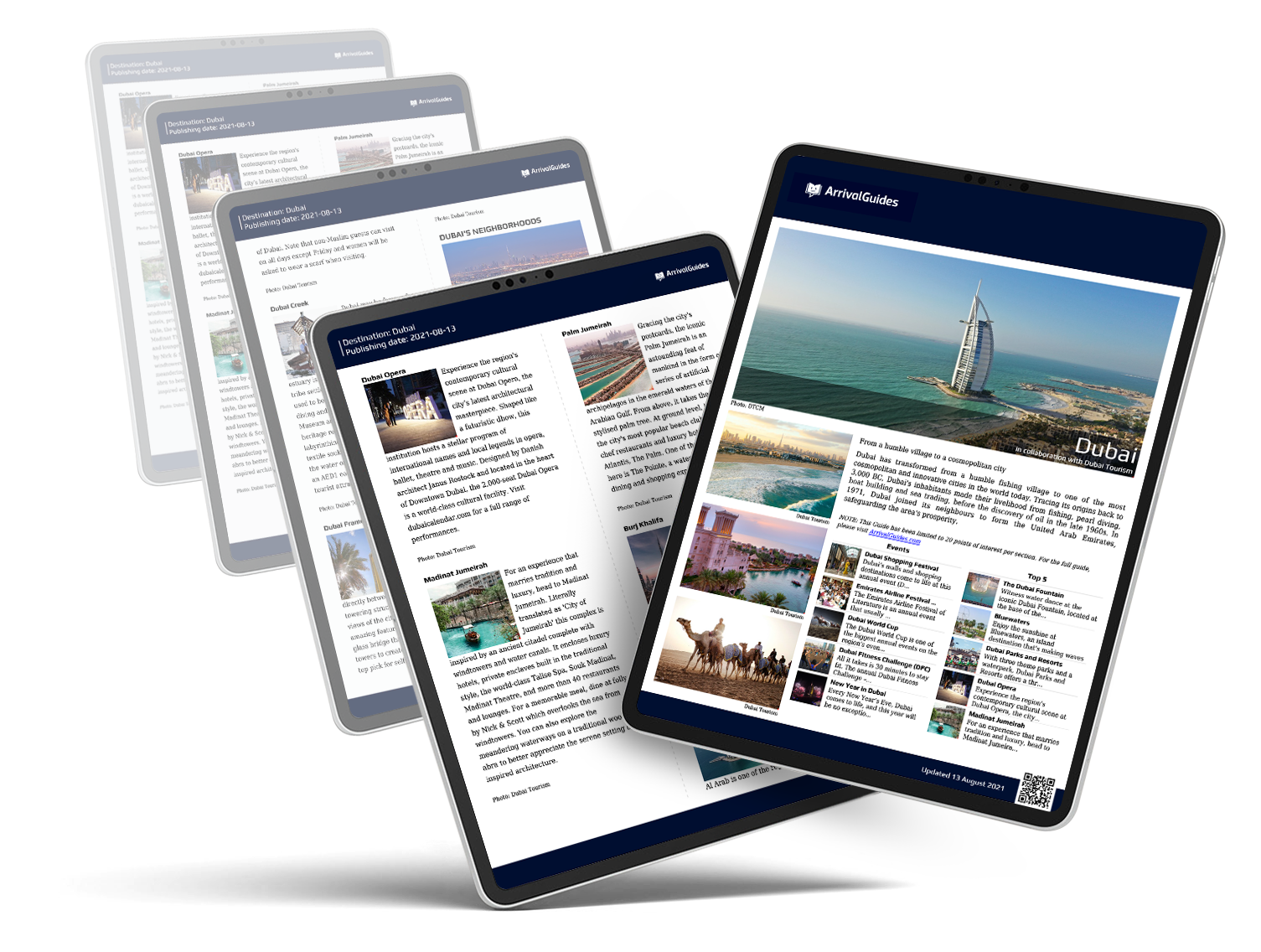
-
![View of an ancient sculpture in front of the Pisa Cathedral (Duomo di Pisa) in Pisa, Italy. It is located in Miracoli Square (Piazza dei Miracoli).]() Provided by: Isa Fernandez Fernandez/Shutterstock
Provided by: Isa Fernandez Fernandez/Shutterstock

Our travel guides are free to read and explore online. If you want to get your own copy, the full travel guide for this destination is available to you offline* to bring along anywhere or print for your trip.
*this will be downloaded as a PDF.Price
€4,95
Tower of Pisa
The guide was updated:
21529 Reviews
Badge of excellence
Tuscany Day Trip from Florence: Siena, San Gimignano, Pisa and Lunch at a Winery
The Leaning Tower of Pisa is one of Italy’s (and the world’s) most recognisable landmarks—but the tilt that made it famous wasn’t part of the plan. Construction started in the 12th century, and the soft ground caused it to lean almost from the beginning. Up close, it’s oddly striking, almost like a lopsided wedding cake, and yes, you can still climb it.
Useful Information
- Address: Piazza del Duomo, Pisa
- Opening hours: Daily 9am–8pm
- Phone: +39 050 835011

From EUR 95
Lowest price guaranteedDigital Travel Guide Download
Our travel guides are free to read and explore online. If you want to get your own copy, the full travel guide for this destination is available to you offline* to bring along anywhere or print for your trip.
*this will be downloaded as a PDF.Price
€4,95

You can’t really miss it—Florence’s cathedral (Cattedrale di Santa Maria del Fiore) dominates the skyline with that massive red-brick dome. Construction began in the 13th century and continued for nearly 150 years, which is evident in the diverse styles. The outside is covered in pink, green and white marble—oddly beautiful up close. Inside, check out Vasari’s Last Judgment fresco under the dome. If you’re up for the climb (and it is quite a climb), the view from the top is worth the leg burn.
Bookable
Read more

Tower of Pisa
The Leaning Tower of Pisa is one of Italy’s (and the world’s) most recognisable landmarks—but the tilt that made it famous wasn’t part of the plan. Construction started in the 12th century, and the soft ground caused it to lean almost from the beginning. Up close, it’s oddly striking, almost like a lopsided wedding cake, and yes, you can still climb it.
Bookable
Read more

Siena
Siena still runs on medieval time—in the best way. Its centre hasn’t changed much in centuries, and that’s part of the charm. The Piazza del Campo is the heart of it all—it’s where the Palio horse race happens twice a year. Climb the Torre del Mangia for wide views across the rooftops. The cathedral’s worth the time, especially its black-and-white striped interior, detailed floor mosaics (open seasonally), and the Piccolomini Library tucked inside. Don’t skip the crypt or the Museo dell’Opera del Duomo—they’re quieter and give you a different angle on the city.
Bookable
Read more

Val d'Orcia
Val d’Orcia conjures up everything you picture when you think of Tuscany—rolling hills, cypress-lined roads, and quiet hill towns. It’s a protected UNESCO site, partly because of the landscape, partly because of how little it’s changed over the centuries. Pienza is the standout—it was designed as the 'ideal city' during the Renaissance and still feels unusually well put together. The Abbey of Sant’Antimo is a peaceful stop, tucked into the countryside. And if you're into wine, this is Brunello country—some of the best reds in Italy. Even just driving through is half the experience.
Read more

Galleria dell’Accademia di Firenze
Best known for Michelangelo’s David, this gallery is a must for anyone interested in Italian art, from Renaissance sculpture to paintings and even some old musical instruments. Besides David, you’ll find works by Botticelli, Ghirlandaio, Pontormo, and others.
Bookable
Read more

The Chianti Region
Known around the world for its wine, Chianti is more than just a label—it’s a patchwork of rolling vineyards, olive groves, and old stone villages spread between Florence and Siena, with no clear delimitation. You’ll come across small family-run wineries, quiet roads, and landscapes that haven’t changed much in centuries. Even if you’re not deep into wine, it’s an easy and rewarding area to explore.
Read more

Elba Island
The largest of the Tuscan islands, Elba is best known as the place Napoleon was exiled to in 1814—but its history goes much deeper, with Etruscan and Roman roots. These days, people come for the clear water, quiet coves, and easygoing beach towns. There’s good hiking inland, a few thermal baths, and some surprisingly interesting museums about Napoleon’s stay. Ferries run from Piombino, and once you’re there, a car makes it much easier to get around.
Read more

Basilica di San Miniato
If you’re up for a bit of a hike (or a bus ride), San Miniato sits above Piazzale Michelangelo and has some of the best views over Florence, without the crowds. The church itself is one of the oldest in the city, boasting a distinct Romanesque style and a peaceful, yet slightly eerie, crypt worth exploring. It’s also where Florence’s first martyr, Saint Minias, is said to be buried.
Read more

Piazza della Signoria
Hard to miss and easy to linger in, this L-shaped square is basically an open-air museum. Grab a seat at a café (yes, it’s pricey, but the people-watching is worth every euro), and you’ve got front-row views of Palazzo Vecchio, the Fountain of Neptune, and the statue of Cosimo I on horseback. Just off to the side is the Loggia dei Lanzi, packed with Renaissance sculptures—all free to see, no ticket needed. Early mornings or late evenings are quieter if you want to take it all in without the daytime crowds.
Bookable
Read more

Abbazia di San Galgano
This masterpiece of Italian Gothic architecture is most famous for what it’s missing—a roof. The abbey was built in the late 1100s and has been a dramatic-looking ruin for centuries. It’s open to the sky now, but still feels grand in a stripped-back kind of way. Just up the hill, the Rotonda di Montesiepi is worth a quick stop too—inside you’ll find a sword embedded in stone, tied to the story of Saint Galgano.
Read more

Hermitage "Le Celle"
Tucked into the hillside just outside Cortona, Le Celle is a small Franciscan hermitage dating back to the 13th century. It’s peaceful, simple, and still run by monks today. Saint Francis stayed here briefly, and you can actually see his old cell. The hermitage is a sight in itself, but also benefits from beautiful surroundings.
Read more

Cappelle Medicee
Behind the Basilica di San Lorenzo, the Medici Chapels are a major stop for anyone interested in Florence’s history. Built to honour the Medici family—patrons, rulers, and power players—the chapels hold some of the most impressive tombs in the city. The Sagrestia Nuova (New Sacristy), designed by Michelangelo in the 16th century, is the standout, mixing sculpture, architecture, and a fair bit of Medici pride.
Read more

Strozzi Palace
Florence wasn’t just the Medici’s playground—the Strozzi family had their own share of power, and this palace was built to prove it. Filippo Strozzi the Elder commissioned it to show up the Medici and make a statement about his family’s status. These days, the Renaissance palace hosts rotating international art exhibitions and cultural events, and it’s one of the city’s top spots for contemporary shows in a historic setting.
Bookable
Read more

Boboli Gardens
If you want a break from the city’s streets, the Boboli Gardens offer plenty of green space along with a good dose of history. Spread out behind the Pitti Palace, the gardens are filled with sculptures from the 16th to 18th centuries—and a few pieces dating back to Roman times. While you’re there, don’t miss the Porta Romana nearby, an old city gate with its own story.
Read more

Medici Riccardi Palace
Originally built for the Medici family, this palace later passed to the Riccardi family, who expanded it. It’s one of the key spots to see Renaissance architecture up close in Florence. Inside, you’ll find an art museum with frescoes and works that give you a real sense of the city’s past power and wealth.
Read more

Parco Regionale della Maremma
Set along the southern Tuscan coast, this was the region’s first natural park, created in 1975. It’s still well off most tourist itineraries, which is part of what makes it worth the trip. You’ll find wild beaches, open fields, pine forests, and a good mix of hiking and biking trails. It’s a solid choice if you’re after fresh air, sea views, and a quieter, less polished side of Tuscany.
Read more

